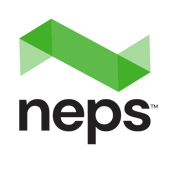The Workforce Evolutionaries: Finding a Place for AI in Our Communications
We are, in essence, staring down the barrel of another Industrial Revolution.
OpenAI tools, some not even a year old, have had massive implications on every sector of society, and we have not come close to reaching any definitive answers. ChatGPT’s interactive platform provides users with intelligible conversation and prose, blurring the creative lines between chatbots and people. Codex can interpret systematic commands and translate them into usable code in over a dozen programming languages. DALL·E 2 can produce images from realistic photographs to stylized artwork, all within a few moments of receiving a simple prompt. The list goes on, and their respective user bases and competencies grow by the day.
Just as the development of machinery catapulted the once-handmade world into its next innovative stage some 250 years ago, AI will soon lead us past machinery into the next stage — an Evolution Revolution, so to speak. Ready or not, we are approaching a societal turning point, and we in the CCM industry know that one of the first footholds for transformation will lie in what arguably makes us most human: our communications.
The uncharted future of AI communications was, no surprise, the nucleus of all discussions and panels held at the most recent Document Strategy Forum in Charlotte. As their capabilities continue to improve, successful implementation of evolving AI tools is the biggest upcoming shift in the mass communications industry. Neps already uses AI-driven tools in our solutions to streamline operations, boost productivity, collect and automate data, improve customer experience, and enhance big picture decision making. It is what clients and consumers are coming to expect from their servicers, and as data collection and content demands continue to expand, those customer expectations will quickly become day-to-day business necessities. The competitive advantages of implementing these force-multiplying tools cannot be understated, and steps should be taken to further streamline their wide-spread implementation.

However, integrating AI into the workforce, especially into our communications, requires careful planning and strategic implementation. Companies tinkering with unprotected AI-driven capabilities will leave themselves sitting ducks to potential data leaks and systematic breaches. Additionally, just because a software can produce content does not ensure its quality; false information, biased data conclusions, and “coherent nonsense” are just a few natural side effects of even the most cutting-edge generative AI. These can all steer unprepared communication strategies into costly mistakes and brand corrosion. Though their potential is enormous, technology and communication experts have stressed that we must all recognize the growing pains of these essentially newborn AI tools, especially in their large-scale usage within businesses.
All these problems circle around the most important question of this societal quandary, the elephant in the room we have all considered at some point: “Is my job at risk?” How do we balance the human spirit with the operational efficiency of AI in a way that is both ethical and advantageous? How do we strike the correct compromise in our communication solutions?
There are many open dilemmas regarding how the workforce and society at large will be molded by AI’s long-heralded arrival — and their conclusions will no doubt continue to unnerve us just as much as they amaze us. Nevertheless, as we look to the future and make our best-laid plans, the human element should forever remain at the heart of how we manage our communication efforts. New iron-clad security and privacy measures must be developed and monitored if a CCM software is to have any chance against surmounting cyber threats. The value of our best writers and graphic artists should not depreciate; rather, our creatives should be teaming up with these emerging technologies to create content faster than ever, leaving room for more high-level creative output and expansion. The massive amount of data we already collect from our customers could not be efficiently handled without large-scale automation, but neither could it be comprehensively analyzed and acted upon without skilled, human employees who understand how the data was processed in the first place.
AI is meant to assist, not replace. Employees who have the soft skills and the proper training necessary are what make AI tools work. This new Industrial Revolution, the progress made in only the next few short years, will be society-defining. Reminding ourselves daily that human beings — with all their curiosities, skillsets, and spirit — remain absolutely crucial to making our communications work is the only logical, ethical, responsible way forward.




